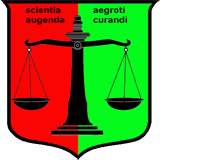EUTwinsS: Twins with SchizophreniaInstitute for Response-Genetics, University of ZurichHead: Prof. Dr. Hans H. Stassen |

|


Partners:
|
The Concept of Within-Pair ConcordanceThe concept of within-pair concordance is used to describe the similarity between monozygotic (mz) and dizygotic (dz) co-twins with respect to a set of variables ("traits"), preferably in a quantitative way. This concept is a special form of a more general approach to quantifying between-subject and within-subject similarity for a given set of features, for example, when addressing the question of "familiality" of psychopathology syndrome scores within families, or when comparing the intra-individual stability of brainwave patterns over time with the inter-individual differences in the general population. Unlike correlation analysis, where the comparison of a feature derived from all first-born co-twins with the same feature derived from all second-born co-twins of the sample under investigation yields a single correlation coefficient, the concordance approach evaluates the similarity for each twin pair separately, thus yielding a distribution of similarity measures. Distributions of Quantiative TraitsQuantitative similarity measures are under most circumstances normally distributed and sample-independent. By contrast, qualitative measures often lack reproducibility because they require the definition of "tresholds" for the underlying categories which may be, to some extent, arbitrary. This is particularly true for the yes-no dichotomie of the concordant/discordant models. Figure 2 shows the within-pair concordances in mz and dz twins for the quantitative traits "finger ridge count", "body height", "shoe size", "body weight", and "brain-wave patterns" [Lykken and Stassen: data of 1,300 dizygotic and 1,434 monozygotic twin pairs]. Mean values and variances are strongly correlated (the higher the mean value the smaller the variance. All means values display a mz:dz ratio of 2:1 independent of the observed magnitude. Norm of Reaction — From Genotype to PhenotypeGenes code for proteins or RNA ("gene products") —which may interact among each other or with their immediate environment within the cells in a variety of ways— and influence the observable phenotypes ("traits of interest") only after a cascade of intermediate steps. In consequence, empirically derived genotype-phenotype correlations are typically weak, while the amount of phenotypic variance explainable through a single genomic locus is generally modest, often tiny, in the range of a few percent. Close genotype-phenotype correspondences with an approximate one-to-one mapping are rare. The cascade of intermediate steps leading from a particular gene to its corresponding phenotype gives rise to modulations and modifications through endogenous and exogenous factors, particularly in cases where the gene under investigation is part of a self regulating system encompassing a number of genes rather than a single gene. The modulations and modifications induced by endogenous and exogenous factors lead to variations in the observed phenotypes which are almost always normally distributed ("norm of reaction") with well-defined means and standard deviations for ethnically homogeneous populations. |
|

Within-pair concordances in mz and dz twins for the quantitative traits "finger ridge count", "body height", "shoe size", "body weight", and "brain-wave patterns". The distributions are approximately normal with means ranging between 0.99 (finger ridge count) and 0.65 (body weight). All mean values display a mz:dz ratio of 2:1 [Lykken and Stassen: data of 1,300 dz and 1,434 mz twin pairs].
Please note: No more than 55% of mz and 15% of dz co-twins are concordant for schizophrenia, thus
displaying highly significant deviations from the expected mz:dz ratio of 2:1 for
additive traits.
|
|
| [ Mail to Webmaster ] k454910@ifrg.ch |